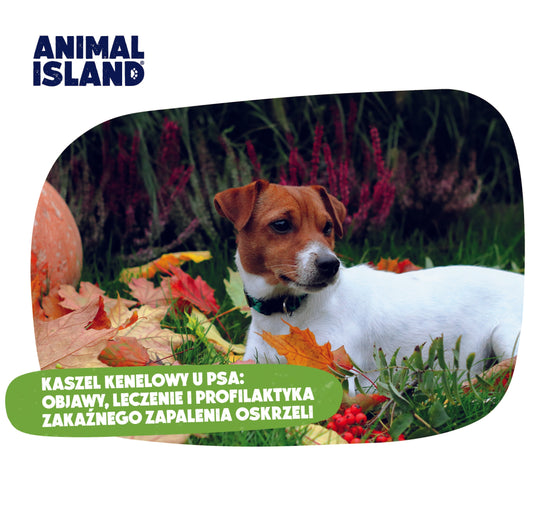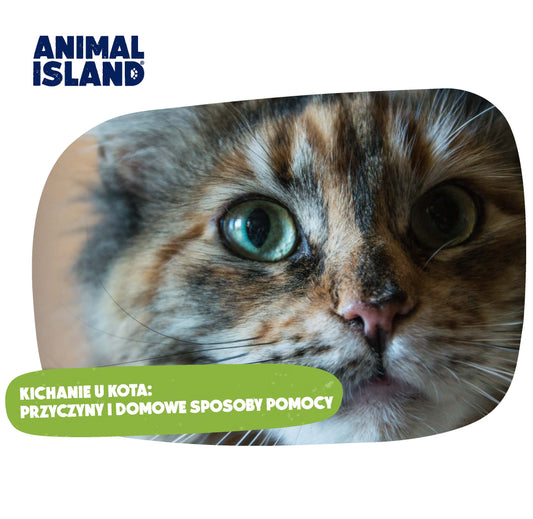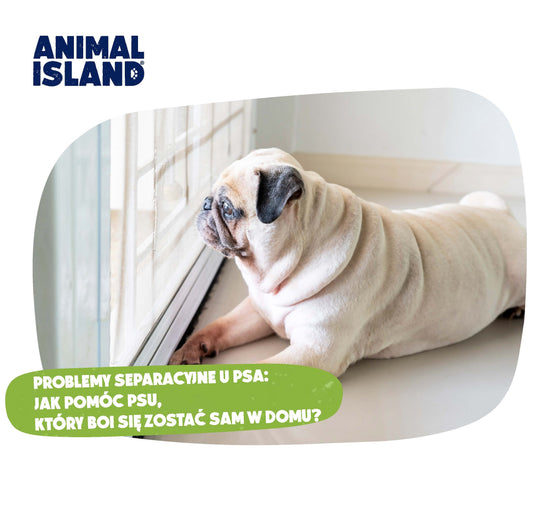Dog Care - How to wash, comb and nourish your dog's coat to keep it healthy?

Dog Grooming – What Should It Involve?
Healthy, shiny and perfectly nourished fur? Your Dog is worth it! The appearance and condition of your pet's fur are influenced by many factors. A properly balanced diet is important (base your pet's nutrition on top quality food ), outdoor physical activity and responsible health prevention, as well as care treatments tailored to the type and length of the Dog's coat and lifestyle. Remember that the Dog's well-being, daily comfort and sense of security also affect the appearance of the coat. It's just like with you and your skin, which is reflected in stress and fatigue!
Your dog most likely sheds twice a year – in spring and in winter. However, sometimes your pet will shed all year round. Remember, this is not a reason to shave your dog or drastically shorten his hair!
Combing is a challenge! How to comb a dog?
Is your Pupil a short-haired dandy or a long-haired beauty? Choose the care methods that suit your dog's coat type! Combing and brushing your dog are basic care procedures that you will perform, depending on your Pupil's coat type: daily, once a week or just 2-4 times a year. There are hundreds of dog breeds in the world, whose representatives have different types of fur. The body of most dogs is entirely or mostly covered with fur. Only the noses and pads of our pets' paws do not have a coat. Dogs have a guard hair, and most breeds also have an undercoat. How does the type of fur affect the care needs related to combing and brushing a dog?
Combing and coat type
Short-haired coat (e.g. Hungarian Vizsla, Doberman) – also called smooth coat, is a short and straight coat, with or without a small undercoat, the easiest to keep perfectly clean and in great condition.
Wire-haired coat (e.g. Wire-haired Dachshund, Jack Russell Terrier, Fox Terrier) – short or medium-length coat, usually with a thick undercoat; requires regular washing with special shampoos that maintain the hardness and roughness of the hair, as well as combing and trimming (in some breeds, e.g. terriers, the topcoat does not fall out spontaneously).
Long-haired coat (e.g. Afghan Hound, Havanese) – this is a coat with long outer hairs, with a thin or thick undercoat; representatives of long-haired breeds require regular combing and brushing, any neglect in this matter can lead to the formation of tangles.
Combing and brushing tools
Dog owners have a wide range of tools at their disposal, which they can use for combing, combing, detangling and brushing… Remember that the equipment should always be selected for the type of fur or hair, and the combing and brushing themselves should be done with the hair and wet (dry combing can damage / break the hair!), with gentleness and sensitivity. Pulling and combing with force can injure the skin. It will also cause pain in the dog and make your pet not want to cooperate with subsequent treatments.
Here are the basic tools for everyday care and special tasks:
- brush – a basic tool for combing short hair with a small amount of undercoat, choose brushes with natural, short bristles;
- glove – brushes in the form of gloves are an excellent alternative to classic brushes, gloves allow for effective brushing in the most comfortable way for the Dog – by stroking!
- comb – made of high-quality, certified plastics or metal; choose a comb with appropriately spaced, thin teeth that are ideal for combing and untangling dog hair;
- currycombs – similar to combs, but equipped with longer and more solid teeth, thanks to which you can easily comb the long fur of your pet and effectively remove dead and matted fur;
- trimmers – recommended for rough fur, they allow you to quickly smooth out thick, medium-length fur and improve the appearance, shorten and shape long hair, trimmers are also helpful for dogs whose fur tends to tangle;
- furminators – facilitate effective combing of dead undercoat, protect fur from tangling and have a stimulating effect on the pet's skin (improving blood circulation and regulating sebum production); you can buy trimmers and furminators separately or as one universal tool with replaceable tips;
- felters – devices equipped with rows of sharpened blades, the length and spacing of which should be optimally matched to the thickness and length of the dog's fur; with the help of felters, you can effectively remove matted fur and deal with particularly difficult and dense tangles; remember that using a felter requires practice!

How to comb out knots?
Despite regular care, does your Pupil's fur or hair occasionally get matted? Medium and long-haired dogs are unfortunately more prone to developing these difficult-to-comb tangles. Matting hair is a problem for owners of, among others, small Yorkies and Maltese, as well as impressive Afghan Hounds or long-haired Scottish Shepherds. What's more! Matting and knots can form not only on the outer coat, but also on the undercoat!
Heavily matted and matted fur is not so much an aesthetic problem as a health problem! Matted fur can create a barrier for the pet's skin, impede proper ventilation and promote the development of rashes and skin infections. A consequence of matted fur can also be the unpleasant smell of our beloved pet. How to comb out mats?
If the first thing that came to your mind was a bath – drop that thought! Water will make the situation worse, making it difficult or even impossible to comb the mats! To comb the matted fur, you can use special sprays that you spray on the Pet's fur, and after a few minutes – comb the fur with your fingers. Then, step by step, gently loosen the mats with your fingers, holding the matted fur against the Pet's skin (this way you will cushion any possible pulls) and comb them gently with a comb.
Do you often struggle with knots? Add special conditioners to your regular care that facilitate combing. In this category you will find both rinse-off products and those that you can apply to the coat and not rinse.
Dog Coat Care and Bathing
There are Dogs who love water and those who honestly don't like it! Which team is your Pupil on? Bathing is an important element of taking care of the cleanliness and condition of your Pupil's fur. During a routine bath, we clean the pet's fur from everyday and unusual dirt, and by using the right products - we can also effectively moisturize and nourish it. But that's not all! Bath time is also a great opportunity to take a close look at your pet. Wet fur allows you to notice what is effectively hidden under dry fur or dog hair: skin infections and tumors.
Bathing a dog – the most important rules
Is your Dog #teamwater or rather #teamnotreasures? Most Dogs don't like baths, but at the same time... they love getting dirty! Your job is to ensure maximum comfort and a sense of security for your Pupil during every bath. Above all, stay calm at every stage of the bath. You can reach for a favorite toy, shield your pet's eyes and ears from the water jet, or even smear the edge of the tub with peanut butter, for which your Dog would give... even a bath! All tricks are allowed!
Line the bottom of the bathtub or shower with a special anti-slip mat or a thick towel. This will minimize the slipperiness of the surface and reduce the stress of the Pet, who will be firmly on their paws. The temperature of the water in which you bathe the Dog is equally important! The optimal water temperature should be 37-39 degrees Celsius, i.e. close to the dog's body temperature. Bathing in water that is too hot or too cold will cause discomfort to your Pet.
When bathing your dog, use only the highest quality washing products – appropriately matched to the type and length of the dog's fur or hair and taking into account any special needs (e.g. related to skin diseases). Pay special attention to the pH of dog cosmetics! The pH of your pet's skin is 7.5 – using products with a pH that is too low can cause irritation and lead to skin diseases (including dandruff).
Each bath should follow the same pattern: the first wash removes dirt, the second wash improves the appearance of the coat/hair and nourishes and moisturizes it. It is important to rinse the dog shampoo very thoroughly, and then dry the dog's coat by pressing with a towel (avoid rubbing and rubbing!). The hair of Maltese, Shih Tzu, Yorkies and other long-haired dogs should be combed before bathing and dried with a hair dryer after bathing (cool air!), while barking. This way we will avoid tangles and the dog catching a cold.
How often should you bathe your dog?
The frequency of bathing your pet depends on several factors. First of all, you need to consider the type and length of fur or hair and the lifestyle your pet leads. Remember that when it comes to bathing, the most important thing is... your moderation and common sense. Both too infrequent and too frequent baths can harm your dog! It is also important to use the right products - nourishing and moisturizing the coat and gentle on the dog's skin. Poor quality detergents can remove natural protective substances from the fur and skin of your quadruped, and consequently lead to their drying out, dulling the hair and skin irritation.
Bathing a Dog and the Pet's Lifestyle
Dogs lead different lifestyles and the frequency of their bathing largely depends on it. It is assumed that a dog should be bathed on average two to four times a year and every time it gets carried away and gets really dirty during a walk. Here are the details:
- Dogs that spend most of their time indoors (e.g. apartment buildings) can be bathed every 2-4 months;
- Dogs that spend most of the day outdoors (e.g. residents of houses with gardens, pets that spend long hours on casual walks) and after returning home occupy strategic places on our sofas or beds should be bathed once every two weeks (or more often, especially if you also have small children in your house!);
- Dogs that live outdoors should only be bathed twice a year, preferably in early spring and late fall (dogs that live outdoors should not be bathed in winter!).
Bathing Your Dog and the Type and Length of Fur/Hair
The decision to bathe your dog more or less often is influenced by the type of fur – its texture (thick or sparse, smooth or curly), length, growth rate and any recommendations from specialists regarding the rules for caring for specific breeds of dogs. Here are the most important tips:
- baths on average once a week – recommended for dogs with long, smooth, shiny and quickly growing fur or hair, e.g. Maltese, Shih Tzu, Yorkies;
- baths once a month or every 2-3 months – recommended for dogs with short, smooth and tight fur, e.g. Labradors and Pugs; decisions about bathing should be closely related to your pet's lifestyle;
- Bathing on average 2-4 times a year – recommended for dogs with undercoat, e.g. Schnauzers and German Shepherds.
When can you bathe a puppy?
If your puppy had a good start in life and spent its first weeks in safe conditions, under the loving care of its mother dog and the watchful eye of a human, you can wait until the little one is 3-4 months old before giving it its first bath. Abandoned puppies or those taken from difficult conditions should be bathed as soon as possible, only if the dog is in poor condition - you will remove dirt and pathogenic microorganisms that pose a threat to the dog's health. If the dog has healthy skin and no parasites, it is best to wait until the animal feels confident and safe with us. This is the time the little one needs to acclimatize to a new place, and the familiar scent will soothe it and strengthen its self-confidence.
Cleansing stains around the eyes
Eye stains that appear in Dogs with light muzzles can occur for various reasons. The cause of the stains may include allergic reactions, bacteria and yeast, as well as inflammation or blockage of tear ducts. The problem should be consulted with a veterinarian. If a specialist rules out or eliminates the ailments, we can start cleaning the stains. It is best to do this using cotton pads or cosmetic pads soaked in boiled, lukewarm water. You can also reach for special wet wipes designed for Dogs. In the case of recurring problems with stains around the eyes, it is worth stocking up on specialist eye preparations, thanks to which maintaining hygiene of the delicate area of the dog's eye will be much easier and safer.
Why is coat care so important? Time to sum it up!
Do you already have theories at your fingertips? Time for practice! Dog fur or hair care is your responsibility!
The condition of the topcoat and undercoat not only determines the appearance of your pet, but is also very important for its health and well-being!
Take care of the right diet, choose the tools and products for combing and washing your dog, show a lot of patience and gentleness! You will somehow get through this! Maybe your dog will like your care rituals? Remember that you can use the services of professional grooming salons, where both regular bathing, care and cutting, as well as cutting for exhibitions (in accordance with the standards of a given breed) can be entrusted to experienced specialists!
At Animal Island we keep our fingers crossed for you!


 Wścieklizna
Wścieklizna

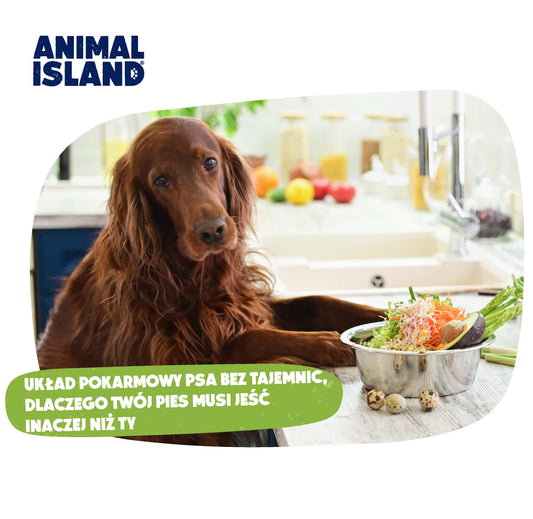

 Zęby i jama ustna – stworzone do chwytania, nie mielenia
Zęby i jama ustna – stworzone do chwytania, nie mielenia
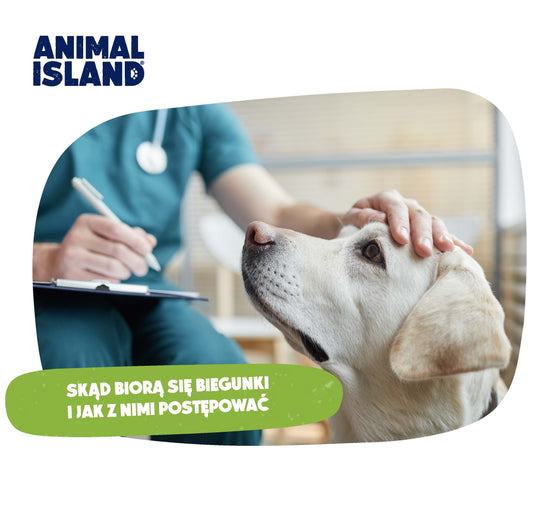



 ROZSĄDNA DIETA, BY ZAPOBIEGAĆ BIEGUNCE W PRZYSZŁOŚCI
ROZSĄDNA DIETA, BY ZAPOBIEGAĆ BIEGUNCE W PRZYSZŁOŚCI
